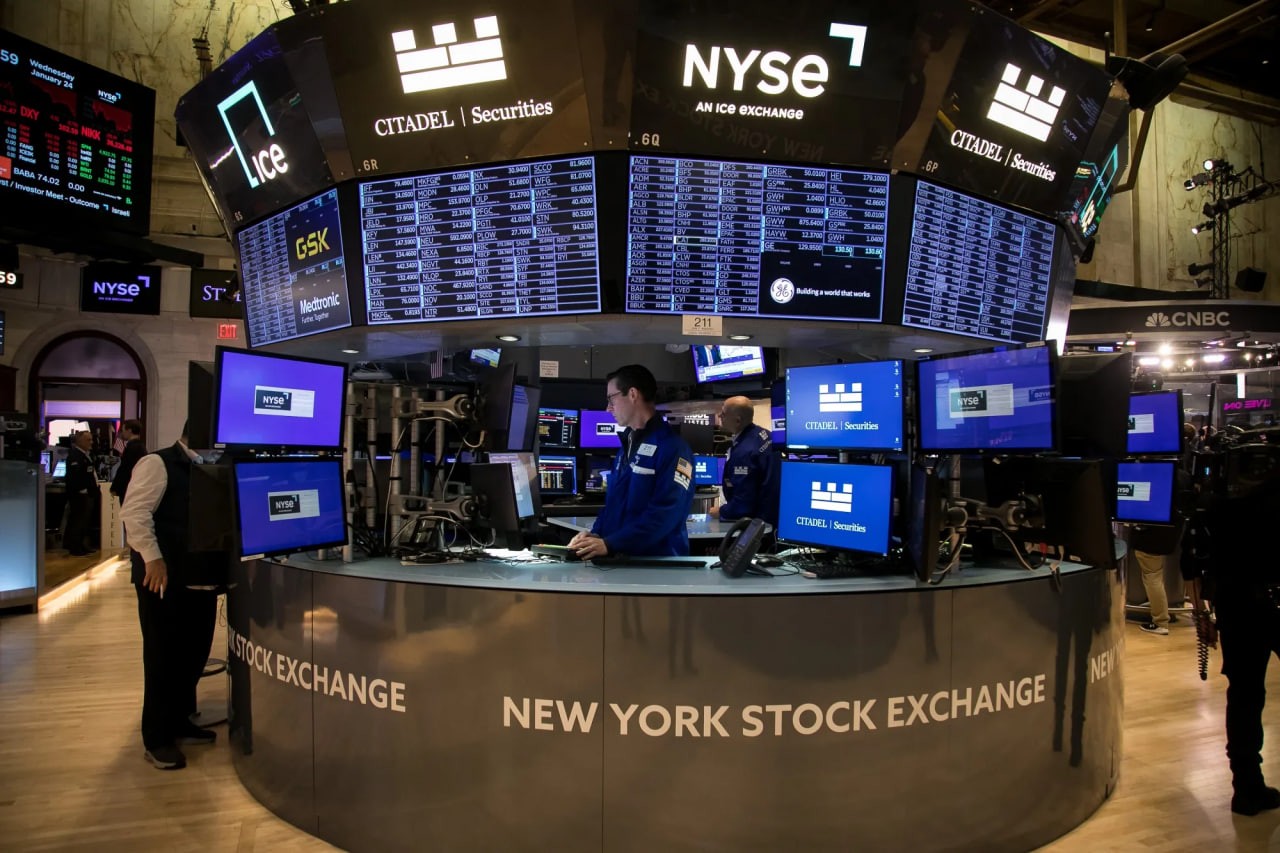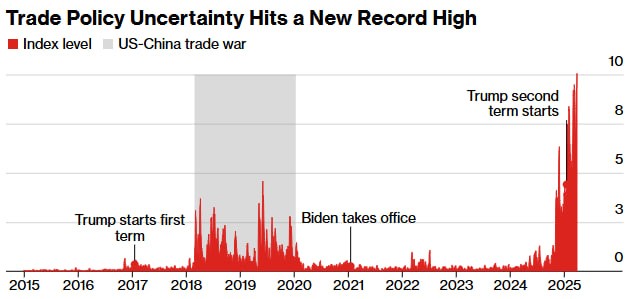
As the deadline approaches, it’s still not clear how far Trump will go with his reciprocal global trade levies, with the Wall Street Journal reporting after the US close that his team is considering a new, middle-ground option.
Asian stocks edged lower as traders grapple with how to position themselves in the countdown to President Donald Trump’s sweeping tariffs announcement.
A regional gauge declined as indexes in Japan and South Korea dropped at the open. Treasury yields advanced after a multi-day drop as traders weighed the odds of Federal Reserve policy easing.
Trump’s deliberations over his plans to impose reciprocal tariffs are coming down to the wire, with his team said to be still finalizing the size and scope of the new levies he is slated to unveil. That unpredictability has shaken markets, prompted economists to cut their growth forecasts and forced central bankers to factor in the potential inflationary impact of import costs.
Trump’s tariffs will take immediate effect after they are announced in the event that’s due to start from 4 p.m. New York time on Wednesday.
“Sentiment remains fragile before tariff day,” said Fawad Razaqzada at City Index and Forex.com. “With the exact scope of these measures still uncertain, you would imagine that investors remain cautious. The trajectory of stocks remains highly uncertain in the near-term outlook.”

Trump is set to impose so-called reciprocal tariffs and other levies on what he has labeled “Liberation Day” — a move expected to cover a broader swath of trade than the 1930 Smoot-Hawley duties that have long served as a cautionary tale about protectionism. It’s part of Trump’s wider project to dismantle the global trading system the US helped build out of that era’s wreckage, on his belief that Americans got a raw deal.
“We doubt that ‘Liberation Day’ is going to mark the end around tariff uncertainty,” said HSBC strategists led by Max Kettner. “We’d argue the potential is in fact higher for the 2 April deadline to introduce even more uncertainty – and hence prolonged broad-based weakness in leading indicators.”
The S&P 500 rose 0.4% Tuesday. A gauge of the “Magnificent Seven” megacaps halted a four-day selloff as all members advanced, with Tesla Inc. up 3.6% before it reports first-quarter sales. The yield on 10-year Treasuries declined four basis points to 4.17%. The dollar was little changed and gold held near a record.
Three of Wall Street’s most-reliable bulls have acknowledged that they were too optimistic in their estimates for the S&P 500 this year, with strategists at Goldman Sachs Group Inc., Societe Generale and Yardeni Research lowering their year-end targets for the benchmark.
However, all three still expect the index to finish the year higher than where it ended Monday.
Market participants are positioning for another solid stretch of performance for Treasuries after signs of cooling US growth drove a first-quarter rally that left benchmark 10-year yields down about a half-percentage point from their January peak. Trend-following hedge funds turned short US equities and long Treasuries last month and the rotation has room to run, according to analysis by Barclays Plc.
Rising potential for a US recession has Pacific Investment Management Co. touting the attractiveness of “stable sources of returns” in global bonds. The bond manager is warning that Trump’s aggressive trade, cost-cutting and immigration policies stand to slow the world’s biggest economy by more than previously expected.
